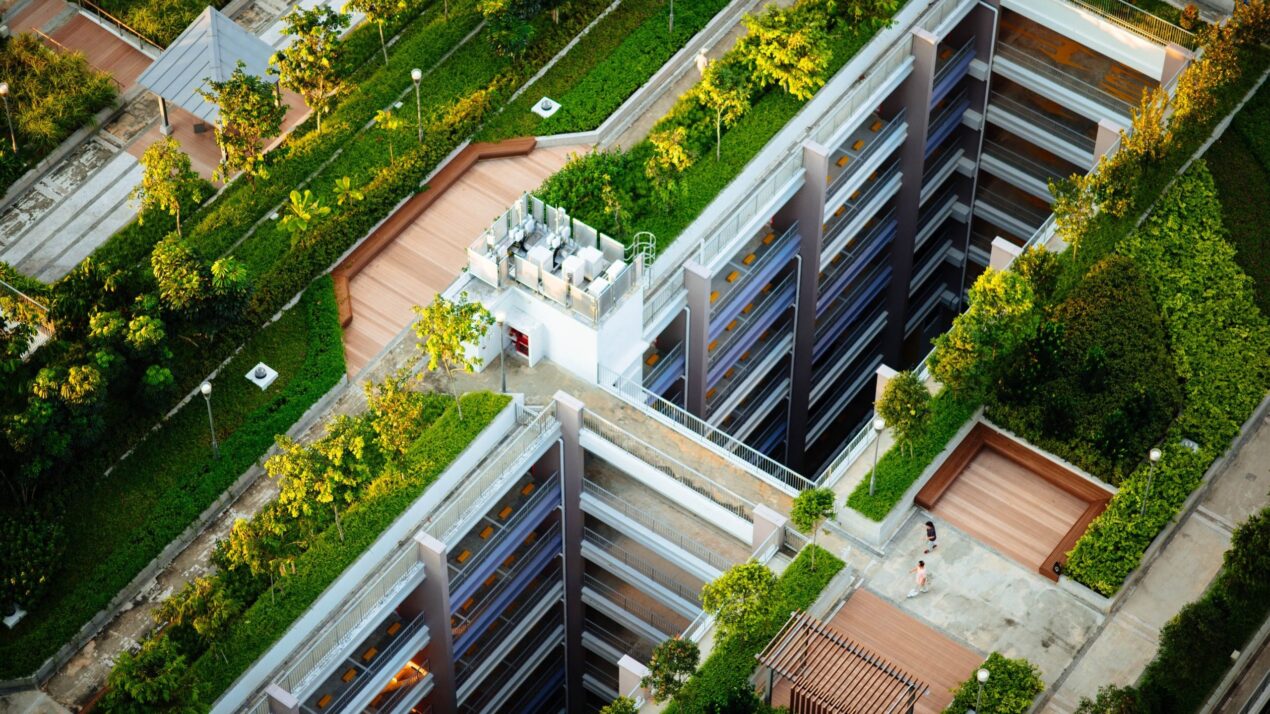
Green roofs
Lead by Example

Summary
Green roofs cool the surrounding air and reduce building heat through a layer of vegetation or other plants. Green roofs can also serve as additional green space. There are two main types of green roofs: intensive and extensive.
Implementation
Promote property owners to explore green roofs by installing them on existing or new publicly-owned property.
Considerations for Use
Green roofs need sufficient structural support and do not work on steep-sloped roofs. Green roofs require maintenance and upkeep every year. Roofs that are open to the public require safety precautions. Intensive green roofs provide more co-benefits (such as stormwater management) are much heavier than extensive roofs and require more structural support, irrigation, and fertilization as well as additional maintenance. Green roofs are generally more feasible and cost-effective in new construction versus retrofits. Given the costs required to install and maintain green roofs, requirements to install them must be carefully considered.
Overview
Climate:
Hot/Humid, TemperatePolicy Levers:
Lead by ExampleGovernments have ownership and jurisdiction over a range of assets (e.g. buildings and streets) and also serve as a direct employer, and contractor. This allows them to promote heat risk reduction and preparedness solutions and demonstrate their impact through leading by example with proactive interventions to make their assets, employment opportunities, and contracts heat-resilient.Trigger Points:
Evaluating or initiating major city infrastructure projectsIncludes projects such as city transit, street or utilities construction / re-construction etc.Planned new developmentIncludes Greenfield or brownfield development or new constructionSubstantial rehabilitationIncludes the re-development or major renovation projects.Intervention Types:
Green/natural InfrastructureSectors:
Buildings
Case Studies
Impact
Target Beneficiaries:
ResidentsPhase of Impact:
Risk reduction and mitigationMetrics:
Decrease in building temperature, Energy savings, Stormwater runoff reduction, Total area of completed and in progress projects
Implementation
Intervention Scale:
BuildingAuthority and Governance:
City governmentImplementation Timeline:
Medium-term (3-9 Years)Implementation Stakeholders:
City governmentFunding Sources:
Public investmentCapacity to Act:
High, MediumBenefits
Cost-Benefit:
HighPublic Good:
MediumGHG Reduction:
MediumCo-benefits (Climate/Environmental):
Improve stormwater management, Preserve biodiversity, Reduce air and water pollutionCo-benefits (Social/Economic):
Build social cohesion, Improve human health, Increase property values, Save on utilities
